Will the Real Captain Marvel Please Stand Up, or Why Can’t the World’s Mightiest Mortal Use His Own Name?
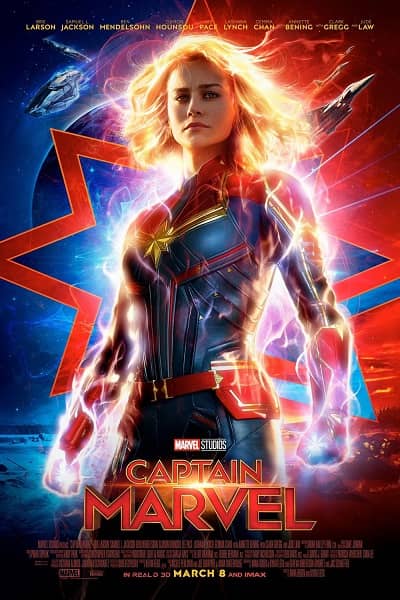 |
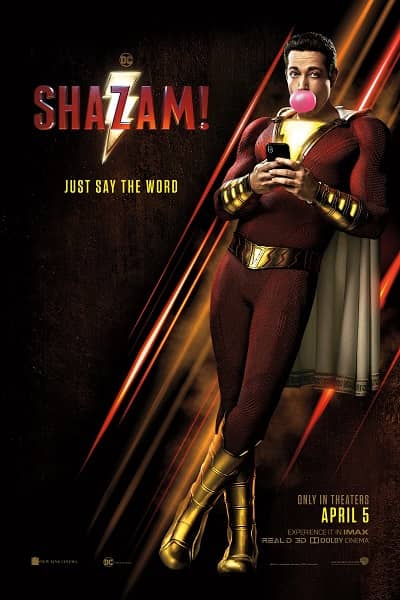 |
A few weeks ago my wife and I saw the new Captain Marvel movie. I thought it was a smashingly successful film, above all in its demonstration of how shockingly superhero storytelling has degenerated over the past fifteen years. But whether I liked it or not is neither here nor there; after all, the movie made a billion dollars, and as Doctor Doom himself would be the first to acknowledge, that’s the important part.
On the way to the theater, my wife wanted to know just who this Captain Marvel was – Brie Larson sure didn’t look like the hero that she thought bore that name, the grinning hunk in the bright red suit with the yellow lightning bolt on his chest. Did Captain Marvel have some sort of life crisis that required an extreme change in direction – and wardrobe? (That happens these days, even in comic books.) She was especially confused because there’s another movie out right now that features the crimson-clad character that she’s familiar with, except in this other movie, he’s called Shazam, not Captain Marvel.
The explanation is simple… well, not really simple, but I’ll try to at least make it comprehensible. This Captain Marvel is not that Captain Marvel. The guy in the red suit is the first, the real Captain Marvel, with a pedigree going all the way back to the fabled Golden Age of the 1940’s, while this current version is, for all of her many virtues, a claim jumper. And yes, something indeed happened to the original hero. He was the victim of a plot more nefarious than anything the Joker or the Red Skull ever cooked up, and he suffered something more starkly evil, more life shattering, and more humiliatingly debilitating than any wound inflicted by magic talisman or sinister superweapon.
So what was it that laid Captain Marvel low?
Whiz Comics #2
He got the hell sued out of him, that’s what, and as anyone who has gone through that ordeal will tell you, it’s just about the worst thing you can experience in this life. Even in the elastic world of comic books, it’s the equivalent of a kryptonite enema. (Hmmm. “Kryptonite Enema” sounds like the title of a long-lost Frank Miller Superman story…)
The original Captain Marvel (or “The World’s Mightiest Mortal” as he was dubbed on the covers of countless comic books, or “The Big Red Cheese” as his arch nemesis, Dr. Thaddeus Bodog Sivana sneeringly called him) first appeared in Fawcett’s Whiz Comics #2 in February, 1940, the creation of artist C.C. Beck and writer Bill Parker. In that first story, orphan newsboy Billy Batson is chosen by the ancient wizard Shazam for a special destiny. When Billy speaks the wizard’s name he is struck by a bolt of magical lightning and instantly transformed into that paragon of justice, Captain Marvel, embodying the wisdom of Solomon, the strength of Hercules, the stamina of Atlas, the power of Zeus, the courage of Achilles, and the speed of Mercury. (God only knows what Captain Marvel’s powers would have been if his patron wizard had been named Melvin.)
Captain Marvel and Shazam
Captain Marvel quickly became hugely popular and his creators built up a highly detailed milieu for him and stocked it with a host of lively supporting characters. His closest allies were Mary Marvel (Billy’s long-lost twin sister, Mary), Captain Marvel Jr. (Billy’s friend, crippled newsboy Freddy Freeman), Uncle Marvel (Billy and Mary’s Uncle Dudley — he has no powers but just likes to dress up and hang out with the kids, making him a cosplay pioneer forty years before his time), and the three Lieutenant Marvels (three guys who also happen to be named Billy Batson, so why not?); together they all make up the Marvel Family. Talky Tawney the talking tiger (don’t ask) is also close to the Marvels and Hoppy the Marvel Bunny was featured in his own “funny animal” titles.
The villains are even better. Besides the bald, bitter, brilliant and butt-ugly Dr. Sivana and his vile offspring, Georgia and Thaddeus Jr. (two other Sivana spawn, Magnificus and Beautia, are friends of the Marvels), there are Black Adam, an earlier champion chosen by Shazam who went rogue, Captain Nazi (the name says it all), and perhaps best of all, the insidious Mr. Mind, a two-inch long bespectacled worm who gives his orders through a voice amplifier and is the megalomaniac genius behind comics’ first super villain team, the Monster Society of Evil.
Marvel Family #1
The Golden Age Captain Marvel stories are a delight. C.C. Beck’s buoyant, humorous art (and that of other Fawcett artists such as Pete Costanza, Kurt Schaffenburger, and Mac Rayboy, whose work on Captain Marvel Jr. earned him an especially high reputation) was often more professional and polished than anything appearing in other publishers’ comics, and the writing (first by Parker and then later by Otto Binder, who wrote more Marvel material than anyone else) had a wit and self-aware, gently parodic edge that was completely missing in the world of Batman or Captain America.
This high quality was rewarded with high sales, so much so that for most of the forties, Fawcett’s Marvel books were the highest selling comics in the country. There were Captain Marvel toys and games, Captain Marvel clubs, and in 1941, the hero starred in one of the best serials ever made, The Adventures of Captain Marvel (which I reviewed right here, chapter-by-chapter, back in 2014). By any measure Fawcett had a big success on its hands, and that was a problem for Captain Marvel’s competition, primarily Superman and his overlords at National Periodical Publications (better known as DC).
The Adventures of Captain Marvel (1941)
Just crushing its pen-and-ink proletarians (the writers and artists, that is) with work-for-hire contracts and claiming complete ownership not only of the means of production but also of the results of their serfs’ labors (the superheroes themselves) wasn’t enough for DC, nor was the company just content to rake in its fair share of the money that miraculously rolled in every week courtesy of the millions of kids who bought this stuff. As Karl Marx proclaimed in the Grundrisse der Politischen Ökonomie (Lex Luthor’s favorite bedside reading, naturally), capital cannot abide a limit, which meant that DC wanted more market share, more money, more everything; like a mad comic book genius bent on world domination, DC wanted it all. (I’m just kidding with the funny-book Marxism…mostly. If you’re at all interested in those early days of comics when the creative and economic structure of the industry was formed, I highly recommend Men of Tomorrow: Geeks, Gangsters, and the Birth of the Comic Book by Gerald Jones. It’s a terrific book that accomplishes the superhuman feat of giving a fair shake to everyone involved, creatives and money men alike.)
Mr. Mind
Whatever the whys and wherefores, DC felt deeply threatened by the success of Fawcett’s comic books, and in the best traditions of free enterprise, Superman’s corporate brain trust decided that if you can’t beat ’em, sue ’em. And so it was that in 1941, DC’s lawyers went to court, claiming that Fawcett had based Captain Marvel on Superman, thus setting the stage for the kind of battle that Kal-El used to have with rogue Kryptonians, the sort of epic set-to where the antagonists blithely fling Homeric insults while they belt each other with freight trains and ocean liners. In the Golden Age, most stories were stand alones and even the most tangled tales were usually wrapped up in two or three issues. Not this one. Once the suit was filed, DC and Fawcett wrangled for seven years before the case was even brought to trial.
Having already invoked the most revered traditions of American capitalism in suing, it’s only natural that the best traditions of American jurisprudence should be honored too, and they were. In 1951 (!) the judge rendered a verdict that pleased absolutely no one, ruling that Captain Marvel was indeed an infringement of DC’s rights but that DC had yielded those rights by not properly securing their character’s copyright. Thus this first round was a victory for the Big Red Cheese, but for reasons that were singularly unsatisfying to all the parties involved.
The Sivana Family
DC appealed — of course — and in 1952 the ruling went in its favor… sort of. The judge ruled that despite DC’s sloppiness, Superman’s copyright was still valid. As for the heart of the issue, he declared that while Captain Marvel himself was not an infringement, certain individual stories or super-feats might be. The only way to determine whether or not they were would be… to hold another trial! Sheer torture! Dr. Sivana would have been delighted at the cruelty of it.
But by this time the superhero end of the comics business had entered a steep postwar decline. Timely/Atlas/Marvel was shutting down most of its superhero books and focusing on non-spandex genres like horror, western, crime, and romance and Fawcett’s sales had dropped by half. The writing was on the wall – the market had contracted and clearly there was room now for only one major superhero publisher, and Captain Marvel’s employers saw no purpose in continuing to fight lengthy and expensive legal battles in order to keep publishing a character who was no longer making enough money anyway.
Men of Tomorrow
Fawcett settled with DC out of court and in the fall of 1953 it pulled the plug on its superhero line. The last appearance of the original Marvels took place in Marvel Family #89 in January, 1954, and as part of the settlement, Fawcett agreed to never publish Captain Marvel again. It seemed as if Billy, Mary, Freddy and their friends and enemies had suffered the ultimate defeat. They had survived a thousand outlandish perils only to fall victim to the grim logic of profit and loss, and in the end they didn’t even get a retirement dinner and a cheap gold watch. (At least the characters lived on in hoarded comic books and fond memory; the writers and artists, on the other hand, were just fired.)
The Marvels were gone, but we’re talking about comic books here, and as every faithful comic book reader knows, in the four-color world no exit is permanent. When you put this together with what Marx said about the insatiability of capital, it will come as no surprise to discover that almost twenty years after driving Captain Marvel into the phantom zone, DC was looking to expand its stock of characters and publish more titles. In 1972 it bought the character from Fawcett and laid plans to bring him triumphantly back in his own new comic book. Captain Marvel and his friends returned from the void in February, 1973, in a book titled… um… Shazam!
Captain Marvel #1 (Marvel Comics)
Why not The New Adventures of Captain Marvel or something like that? Because in 1967, Marvel (Marvel Marvel, that is) had introduced its own Captain Marvel character, a cosmic science fiction superhero who had nothing to do with the 1940’s iteration. This meant that Marvel now owned the Captain Marvel name lock, stock, and barrel. For a while, DC’s Shazam! book had a subtitle: “The Original Captain Marvel,” but by 1974 Marvel’s lawyers had put a stop to that.
DC was hardly in a legal or moral position to complain, having killed the Big Red Cheese in the first place. This is why DC’s character is now called Shazam and nothing else. (He can be addressed by his real name inside a story but can’t be “titled” anything but Shazam, and “Captain Marvel” can’t be used for toys or any other kind of merchandise, so that these days most people think that Shazam really is his name.)
Captain Marvel — the real, the original Captain Marvel — is one of my favorite comic book characters. Though I have heard good things about it, I haven’t seen his new movie, maybe because I love him so much. It would be too painful to spend two hours watching him travestied. (I already went through that with the Frank Miller Spirit movie. I still have the scars, and they had to replace the chair I was sitting in at the movie theater.)
Shazam! #1 (1973)
I just know that since his resurrection (the first issue of Shazam! told some cock-and-bull story about a Sivana-engineered suspended-animation weapon gone wrong that froze the whole Fawcett crew for twenty years) no one has seemed to be able to get the character quite right. In 1973, with much fanfare, DC had brought back Captain Marvel’s original artist, C.C. Beck, to work on the title, and his art was as fresh and delightful as ever.
C.C. Beck
However, he quit in disgust after a handful of issues. None of the writers had any idea what to do with Billy and his alter-ego, Beck said; they were writing this great hero as a stupid goof. There is certainly a “big Boy Scout” element to Captain Marvel, but he isn’t just any Boy Scout — he’s the World’s Mightiest Eagle Scout, and if you’ve ever known an Eagle Scout, you know that whatever they are, they’re not dullards or dimwits.
Captain Marvel — now and forever
In the years since his return, DC has tried a lot of different approaches with Captain Marvel; some have been better and some have been worse, but none have recaptured the unique energy and fun of the hero’s first decade. That’s understandable, I suppose. Some characters are so closely connected to the time and place that produced them that they can’t travel far from it without becoming mere shadows of themselves, strangers dressed in old, familiar clothes. Perhaps Captain Marvel is like that, and in that sense at least, Superman really did win their battle by proving to be the more adaptable, resilient creation.
Anyway, that’s why the World’s Mightiest Mortal is powerful enough to do everything but use his own name.
Who’s on first?
Whew! I’m glad we’ve got that settled. Now we can… what? Why is the post-original, “original” Marvel Captain Marvel a man, and this current Marvel Captain Marvel is a woman? Damn. It’s like this — in 1974… you know what? We’ll talk about it some other time. Right now it’s late and I’m just too tired to go into it, and if that’s not good enough for you, well… sue me.
Thomas Parker is a native Southern Californian and a lifelong science fiction, fantasy, and mystery fan. When not corrupting the next generation as a fourth grade teacher, he collects Roger Corman movies, Silver Age comic books, Ace doubles, and despairing looks from his wife. His last article for us was a personal reminiscence of John Huston’s 1941 film The Maltese Falcon.
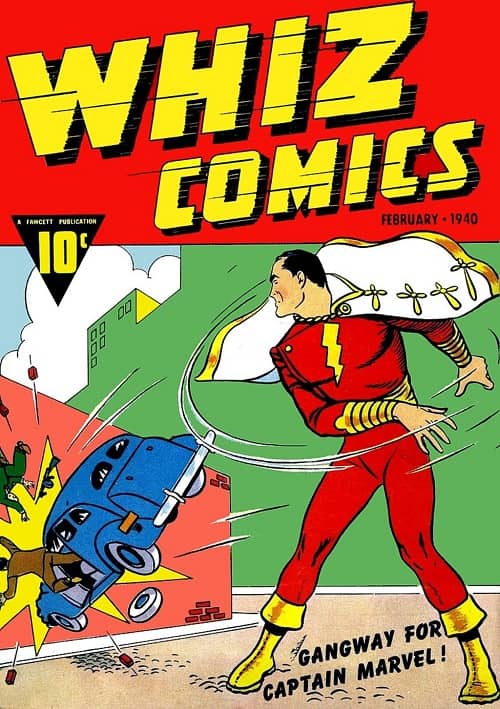
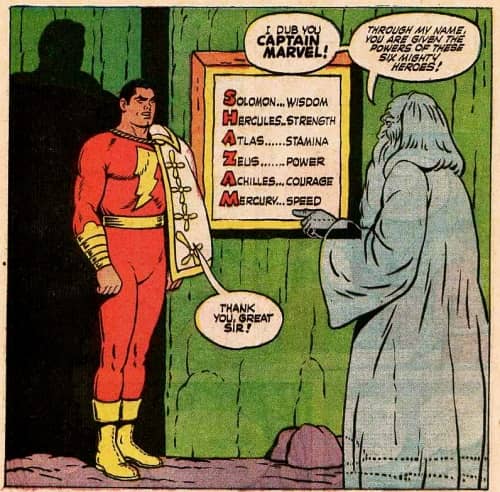
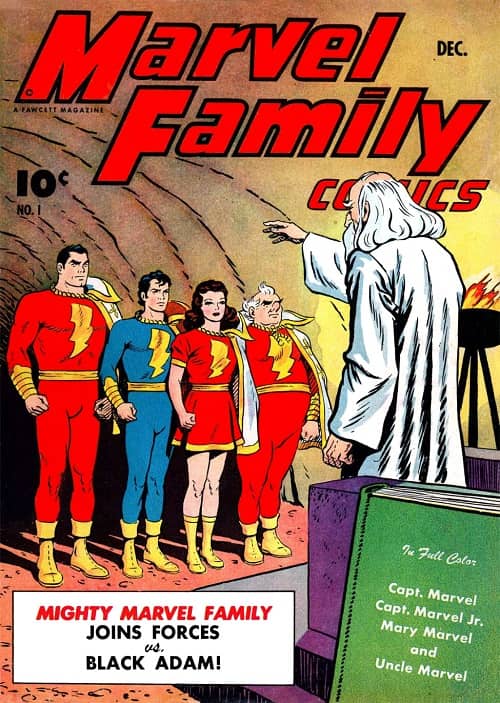
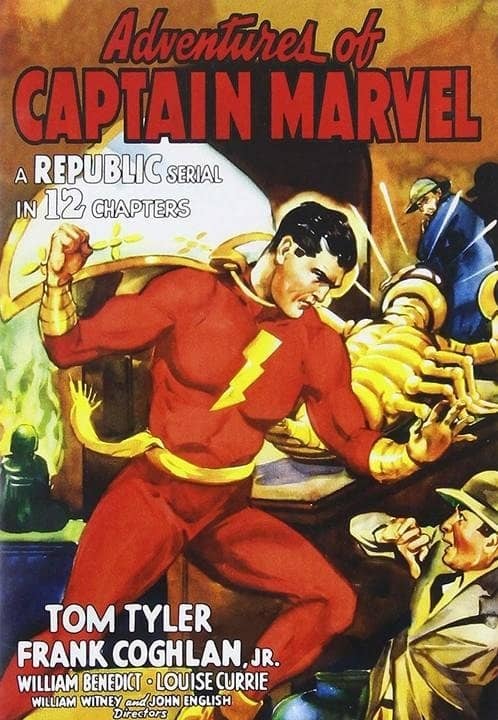
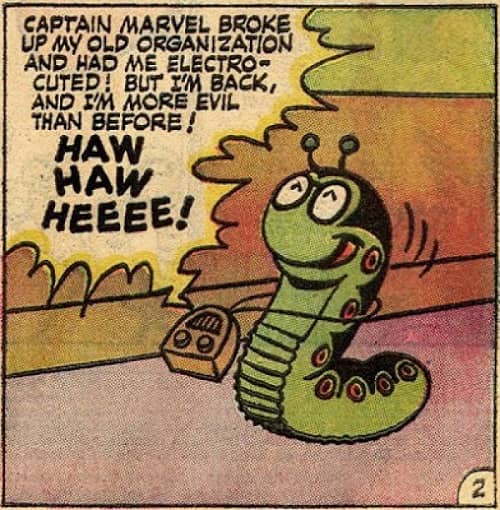
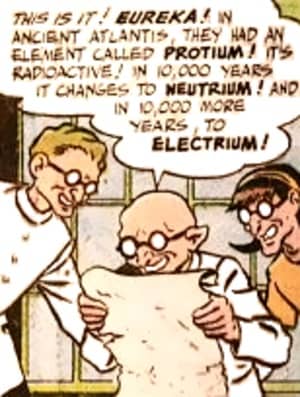
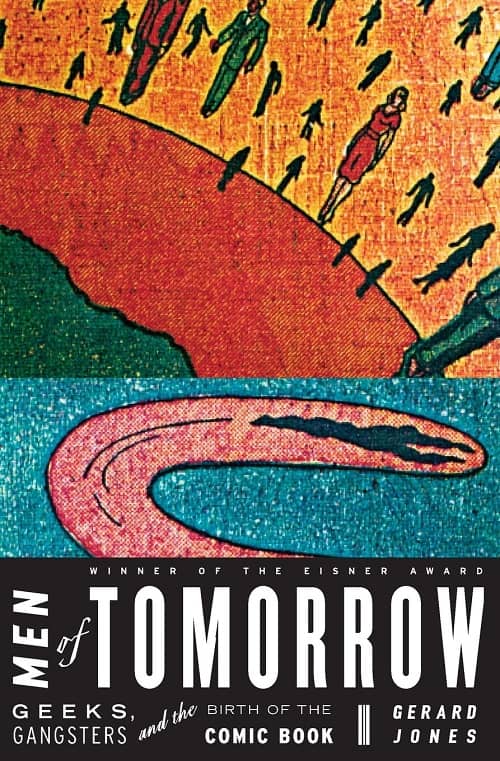
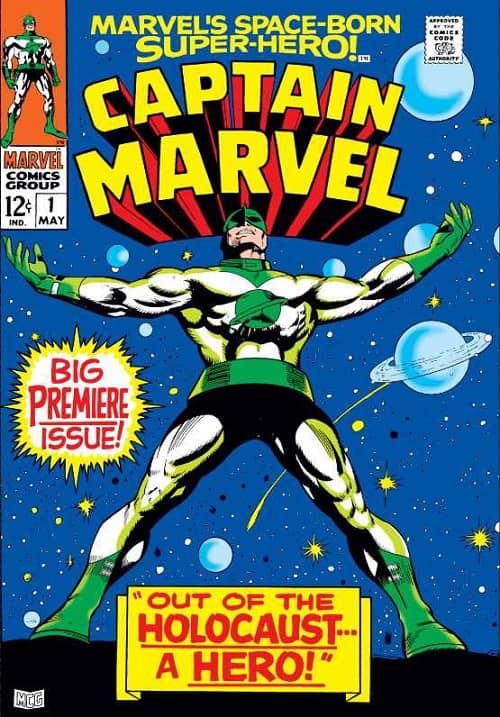
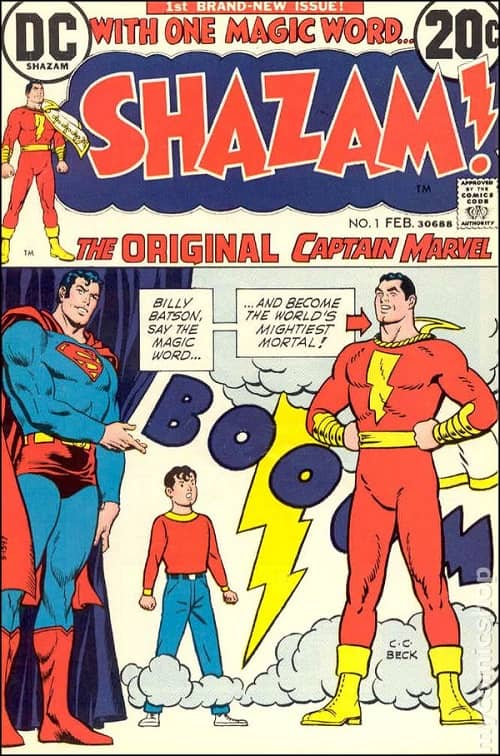
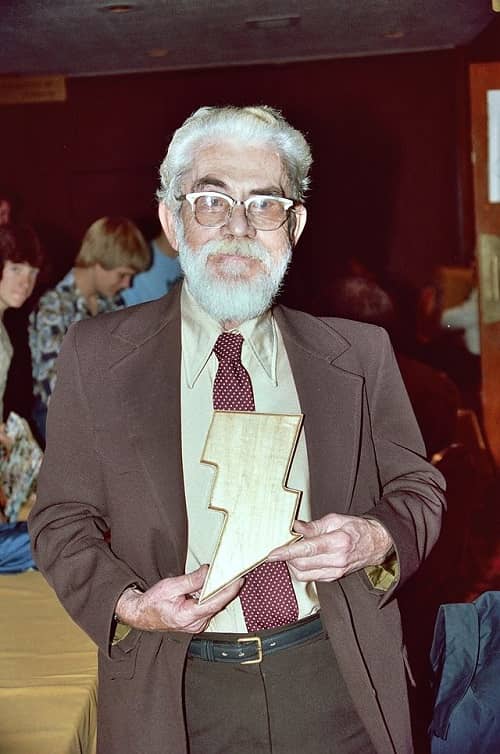
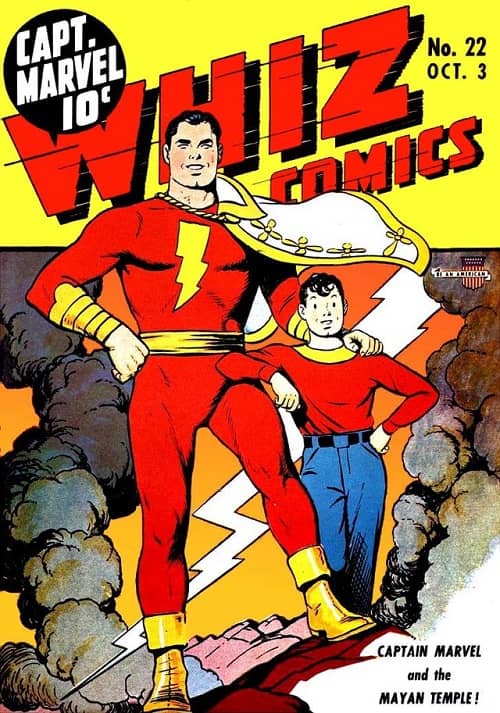
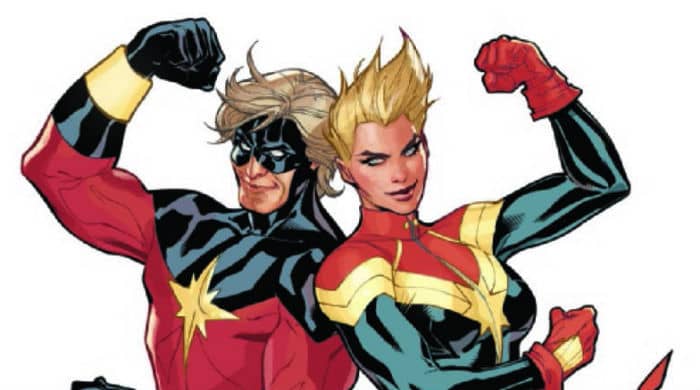
I read the review of Shazam on Tor, thought it sounded eerily familiar (except for the title) then realised this was because I’d watched the original Forties series based on your recommendation. So of course I had to ask why it wasn’t called ‘Captain Marvel’? Like, duh.
I never realised the title change dated back as far as the Seventies – so thanks for filling me in this regard.
It seems that the popular new way to write Captain Marvel is to emphasis the little boy aspect, so they portray him as a boy in an adult man’s body to comedic effect. A lot of comics fans and pros seem to have rolled over and accepted this (and it’s the angle used for the new movie), but I don’t like it because it de-emphasizes stuff like the adult Cap having the wisdom of Solomon and generally just being a fully capable badass adult man.
I also can’t stand the idea of the character playing second fiddle for even a moment to Superman. It’s like seeing a brilliant wrestler who headlined all over the world having to kiss Hulk Hogan’s ass or something.
I don’t remember if I ever encountered the comic book version — most of my experience with the character was the Krofft Saturday morning TV series.
Chosen from among all others by the immortal elders – Solomon, Hercules, Atlas, Zeus, Achilles, Mercury – Billy Batson and his mentor travel the highways and byways of the land on a neverending mission: to right wrongs, to develop understanding, and to seek justice for all! In time of dire need, young Billy has been granted the power by the immortals to summon awesome forces at the utterance of a single word!
Great write-up, Thomas, thanks for the entertaining and illuminating journey.